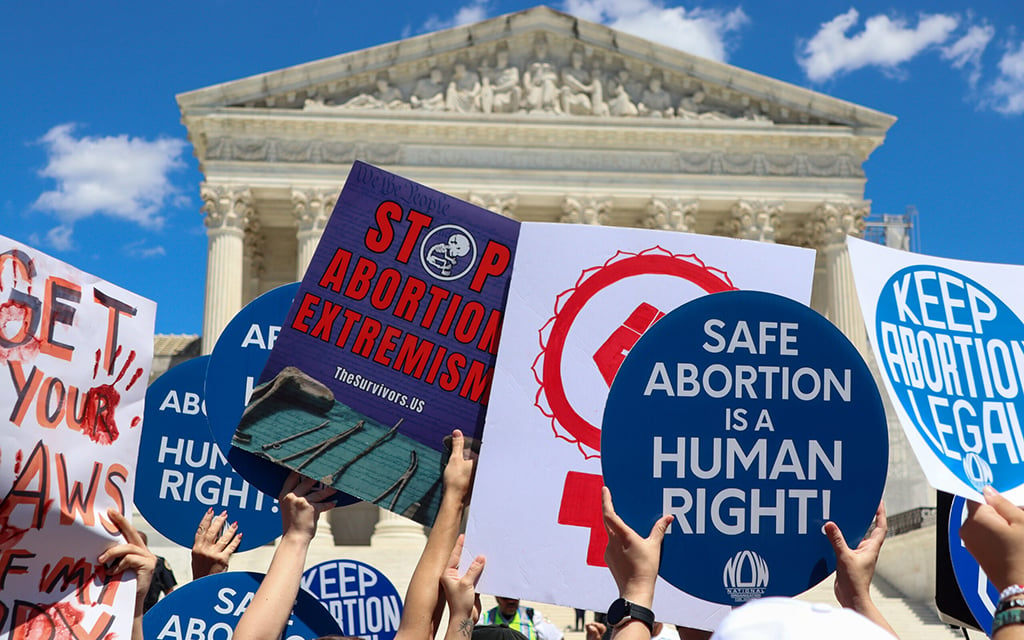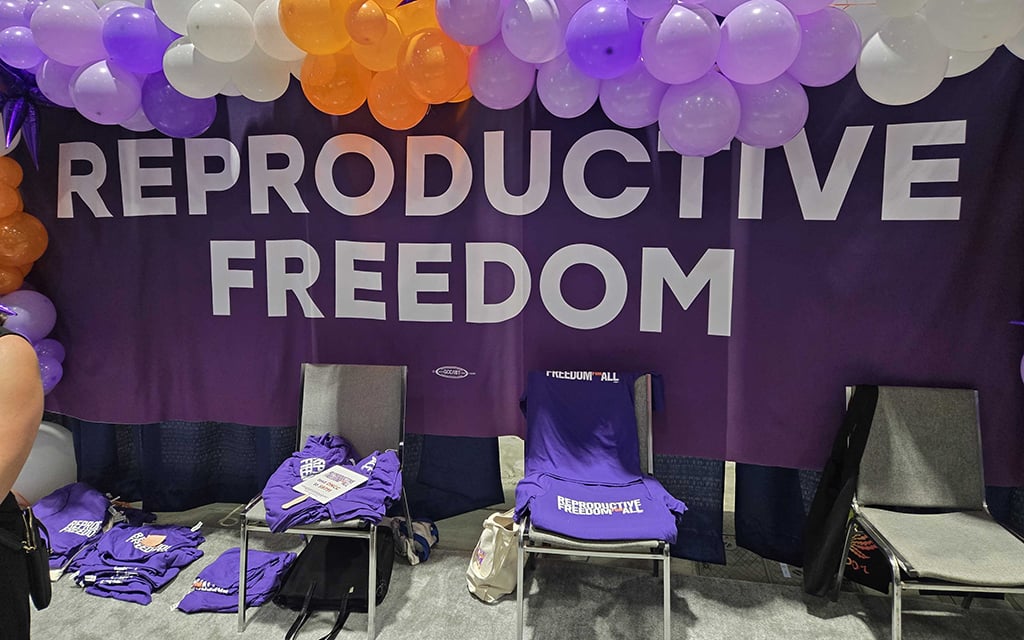WASHINGTON — States have imposed a wide range of abortion rules since the Supreme Court ended constitutional protection more than two years ago.
Half the states allow abortion through viability or set no restrictions tied to gestational age. Voters in Arizona and nine other states will decide whether to move in that direction in November.
Fourteen states ban abortion entirely.
The other 11 states are somewhere in between – including Arizona, the only one that cuts off access at 15 weeks. Nearly all abortions in the country – 93% – are performed by that point.
Proposition 139 would guarantee access in Arizona through viability, when a fetus can survive outside the womb.
The legal patchwork has evolved quickly since the high court struck down Roe v. Wade, with limits often pegged to rapidly changing developmental benchmarks.
Here’s a breakdown of what happens at different points in pregnancy, and when different state abortion laws apply:
5 weeks
Gestational age is measured from the start of the pregnant person’s most recent menstrual period.
At 5 weeks, the fetus is roughly the size of a sesame seed. The belly may seem bloated as a result of hormonal changes or may not look different at all.
This is about when most at-home tests will show as positive, according to Cleveland Clinic.
6 weeks
By the 6th week, small buds that will later turn into legs and arms develop.
Proposals to ban abortion at this stage are often referred to as “fetal heartbeat” bills, though there won’t be an actual heart with chambers pumping blood for several more weeks.
What a sonogram may detect, and translate into heartbeat-like sounds, are electrical pulses from a cluster of cells that haven’t yet developed into a heart, according to the American College of Obstetrics and Gynecology.
Four states ban abortion after 6 weeks: Florida, Georgia, Iowa and South Carolina.
12 weeks
At 12 weeks, the fetus is roughly the size of a plum. Reproductive organs have formed, though they’re still too small to easily determine the sex on most scans.
Nebraska and North Carolina ban abortion after 12 weeks.
13 weeks
Week 13 marks the beginning of the second trimester. A small “baby bump” may be noticeable in the abdomen. By now, the fetus is roughly the size of a peach.
In 2022, 11,407 abortions were performed in Arizona, and 92% of those were done by the end of the first trimester, according to the most recent report from the Arizona Department of Health Services. The rest were done by week 20.
That’s nearly the same as the national average reported by the Centers for Disease Control and Prevention.
15 weeks
By 15 weeks, the fetus might be able to suck a thumb, yawn, stretch and make faces, according to the Cleveland Clinic.
Arizona’s 15-week ban took effect in December 2022, six months after the ruling in Dobbs v. Jackson Women’s Health sent abortion regulation to the states. By then, the GOP-controlled Legislature had enacted a “trigger” law that would go into effect once Roe fell.
No other state cuts off abortion access at this point, according to the Guttmacher Institute, which studies reproductive health and rights.
In 2022, all but 380 of the 11,407 abortions reported in Arizona (3.3%) were performed before 15 weeks, according to state health department data.
Arizona’s cut-off makes no exceptions for rape or incest. After this point, a pregnancy may be terminated only to save the life of the pregnant person or prevent severe bodily harm.
The proposed Arizona constitutional amendment, known as Proposition 139, would lift the 15-week cap.
“There’s many reasons women can’t get in at 15 weeks,” said Dr. Gabrielle Goodrick, medical director and owner of Camelback Family Planning, an abortion clinic in Phoenix. “Socioeconomic, educational and situational aspects all play into it.”
People with young children might need child care, she said. Or they can’t get transportation or time off from work. They may not realize they’re pregnant until the deadline is nearly upon them.
“There are just too many factors that are on a person-to-person basis to have strict gestational limits in place,” she said.
Opponents of Prop. 139 reject those arguments.
“Providing or having an abortion is playing God,” said Joseph Perron, founder of Arizona East Valley Pro-Life Alliance. “Life begins at conception and any abortion done after that is killing a child.”
18 weeks
At 18 weeks, a sonogram will show the sex of the fetus. Kicks and punches will soon be felt.
Utah’s limit is set at 18 weeks.
20-22 weeks
Twenty weeks marks the halfway point in an average pregnancy. By now, the fetus is roughly 10 inches long – bigger than a banana. The heartbeat can be heard via stethoscope or doppler ultrasound.
Wisconsin and Ohio have 20-week caps. The limit in Kansas is 22 weeks.
Viability
A fetus born before 24 weeks has a very low chance of survival – about one in seven. The odds improve dramatically after this point.
By 24 weeks or so, a fetus can feel and respond to pain, according to the American College of Obstetricians and Gynecologists. At 26 weeks – the start of the third trimester – the fetus is roughly 14 inches long and may open its eyes for the first time.
Roe was crafted on the basis of trimesters. In 1992, the Supreme Court shifted the rules to keep up with medical advances, declaring that states can regulate abortion after viability.
- Sixteen states allow abortion through viability: California, Connecticut, Delaware, Hawaii, Illinois, Maine, Massachusetts, Montana, Nevada, New Hampshire, New York, Pennsylvania, Rhode Island, Virginia, Washington state, Wyoming.
- Nine states and the District of Columbia set no restrictions tied to gestational age: Alaska, Colorado, Maryland, Michigan, Minnesota, New Jersey, New Mexico, Oregon and Vermont.
- The 14 states that ban abortion entirely are Alabama, Arkansas, Idaho, Indiana, Kentucky, Louisiana, Missouri, Mississippi, North Dakota, Oklahoma, South Dakota, Tennessee, Texas and West Virginia.
Proposals
Voters in 10 states will decide on ballot measures that would enshrine a right to abortion.
In Nevada, Colorado, New York and Maryland, where abortion is already legal, initiatives would add a right to reproductive freedom to the state constitutions. The Colorado measure would also repeal a ban on the use of state funds for abortion.
In South Dakota, where abortion is banned, an initiative would allow abortion until the second trimester.
Ballot measures in Arizona, Montana, Missouri, Nebraska and Florida would protect abortion access until viability.
Nebraska bans abortion after 12 weeks. Voters there could face two somewhat contradictory measures, though the state’s highest court is weighing challenges that could kill either or both.
One would protect abortion until viability. The other would ban abortion after the first trimester except in cases of rape, incest or medical emergency.
“A ban is a ban,” said Athena Salman, who recently resigned from the Arizona House to run the Arizona arm of Reproductive Freedom For All, a national group. “To place a limit on when someone can access a form of health care, especially when their health may be at risk, is cruel.”



